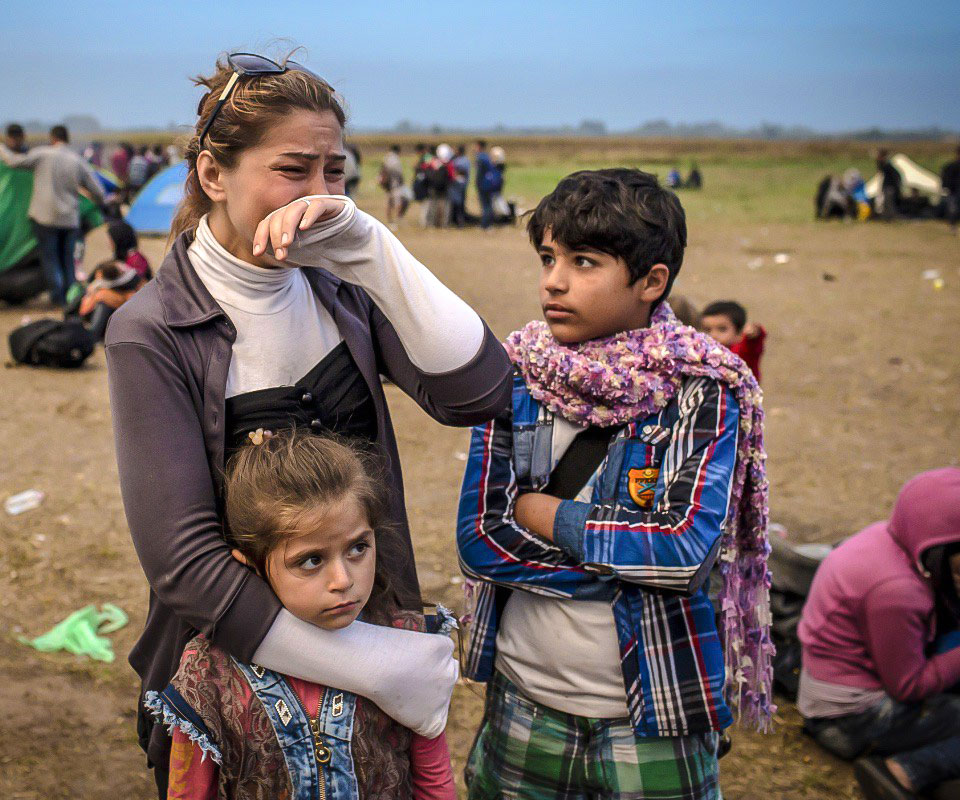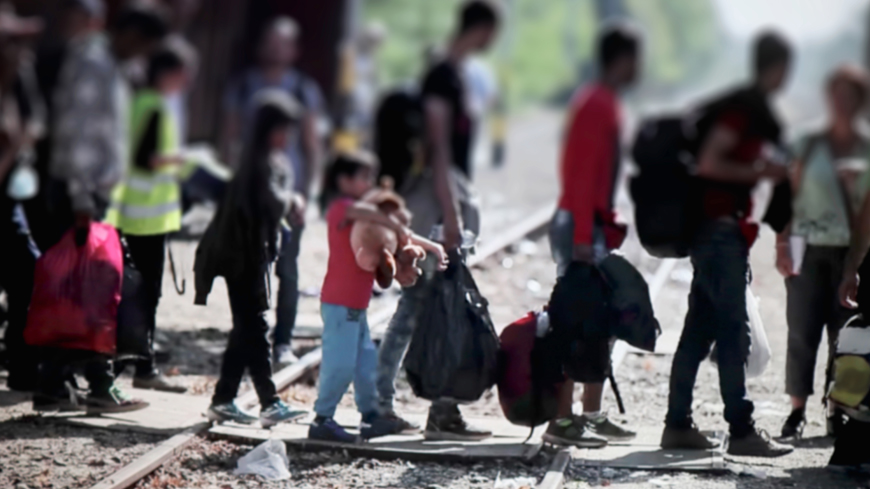Guatemala Climate disasters and poverty drive high chronic malnutrition rates in Guatemala. Haiti Natural disasters, instability, and lack of affordable food has left millions of Haitians hungry. Honduras Action Against Hunger fights hunger and responds to emergencies in Honduras. Nicaragua As food prices increase in Nicaragua, many families cannot afford to eat a healthy diet. Peru Malnutrition has declined in Peru, but children hunger remains a major public health concern in rural areas. Venezuela The political and economic crisis in Venezuela has forced millions to flee their homes.
Availability of food in food security
it possible to sustain food availability, especially in relation to grains, meats, fruits and vegetables. However, some challenges remain, such as promoting agricultural practices that do not deplete natural resources, reducing food losses, and revisiting the high import barriers that could affect availability, especially for the most vulnerable population. Access: the income problem If Latin Americans pay 11% more for their food than the average global citizen, what happens when poverty rates increase in the region? Access to food ends up being even more difficult.
Severe food insecurity In Latin America and the Caribbean
Food insecurity is a public health concern in various regions of the world and is defined as the lack of constant access to enough food for an active and healthy life and to avoid the risk of suffering from nutritional disorders and other related diseases
FAO in the region Regional Initiatives News Events Publications and Multimedia Jobs In one year, 4 million people were thrust into hunger in Latin America and the Caribbean New UN report says that 56.5 million people suffered hunger in 2021, while 268 million faced food insecurity.

A new report from the non-profit organization WFP shows that hunger is on the rise in Latin America. The report, titled “The State of Food Security and Nutrition in the World,” was released on September 10, 2019.
According to the report, the number of people who are chronically undernourished in Latin America has increased from 42 million to 49 million in the last five years. This is an alarming trend, and it is one that we must take action to address.
The report also notes that Latin America is the only region in the world where the number of people suffering from hunger is on the rise. This is a problem that we must solve if we are to achieve the Sustainable Development Goal of Zero Hunger by 2030. Last year almost a third of the people in Latin America experienced either severe or moderate food insecurity, according to the report. Moderate food insecurity means they were forced to reduce the size of their meals, skip meals or to substitute lower quality ingredients. Severe food insecurity is when individuals go days without eating at all.
Food insecurity increase during the Pandemic
The COVID-19 pandemic has had a devastating effect on Latin America, exacerbating existing problems and creating new ones. One of the most alarming consequences of the pandemic has been the sharp increase in hunger and food insecurity.
According to the UN’s World Food Programme (WFP), the number of people suffering from severe food insecurity in Latin America has doubled since the start of the pandemic.
This is a startling increase that is likely to have far-reaching consequences for the region.
According to the Regional Overview of Food Security and Nutrition 2021, hunger in Latin America and the Caribbean is at its highest point since the year 2000, after a 30 percent increase in the number of people suffering hunger from 2019 to 2020.
In just one year, and in the context of the COVID-19 pandemic, the number of people living with hunger increased by 13.8 million, reaching a total of 59.7 million people.
Four out of every ten people in the region––267 million–– experienced moderate or severe food insecurity in 2020, 60 million more than in 2019, an increase of 9 percentage points, the most pronounced rise in relation to other world regions.
This is an alarming situation that requires urgent action. Read on to learn more about the current state of hunger in Latin America and what we can do to help.
The state of hunger in Latin America before the pandemic
Latin America was already facing a hunger crisis before the COVID-19 pandemic hit. According to the World Food Programme, over 38 million people in Latin America and the Caribbean were estimated to be suffering from hunger in 2019. This number is expected to rise to over 70 million by the end of 2020 due to the pandemic.
Before the COVID-19 pandemic, the state of hunger in Latin America was already a concern. According to the Food and Agriculture Organization (FAO), Latin America and the Caribbean had one of the highest rates of undernourishment in the world, with an estimated 34 million people suffering from hunger.
Poverty was a major contributing factor to hunger in the region, with many people living in rural areas or urban slums struggling to access enough food to meet their needs. Inequalities in income distribution and lack of access to education and healthcare also contributed to the problem.
Climate change was also a concern, as it had a negative impact on agricultural production and food security in the region. Droughts, floods, and extreme weather events made it more difficult for small-scale farmers to grow enough food to meet the needs of their communities.
Additionally, economic instability and political crises in many countries in the region also contributed to the hunger problem. Many countries in the region have also been affected by conflicts, displacement, and violence, which has made it difficult for people to access food and other resources.
The pandemic and its effects on hunger in Latin America America and the Caribbean region
The COVID-19 pandemic has left many people around the world struggling to access food. This is particularly true in Latin America, where the pandemic has exacerbated existing hunger and poverty problems.
In Brazil, for example, the number of people experiencing hunger has increased by 15 percent since the start of the pandemic. This is due to a combination of factors, including job losses, reduced access to food assistance programs, and inflation.
Other countries in Latin America are also struggling with increased hunger levels. In Peru, the number of people experiencing severe food insecurity has doubled since the pandemic began. And in Ecuador, nearly one-third of the population is now living in extreme poverty.
Pandemic affect Farmers in Latin America
The pandemic has also had a major impact on food production in Latin America. Many farmers have been forced to reduce their output due to the loss of workers.
A new report from a consortium of United Nations agencies finds that the number of people experiencing hunger in Latin America has grown steadily over the past five years. The report analyzes data through the end of 2019, prior to the arrival of COVID-19. But the social and economic inequality that were leading to malnutrition in the region, the authors say, have only gotten worse during the pandemic. “It’s been a very difficult year,” says Julio Berdegué , the U.N. Food and Agriculture Organization‘s regional representative who was announced the nutritional trends in Latin America and the Caribbean. “If the projections we have of the impact of the pandemic occur, we could be going back to the [malnutrition] levels of the 1990s. We could lose 30 years in the fight against hunger in Latin America
The response of different Latin American countries to the pandemic
When the COVID-19 pandemic began, the governments of America and the Caribbean region responded in a variety of ways. Some took strict measures to prevent the spread of the virus, while others took a more relaxed approach.
The response of each country was largely based on the level of development and the resources available. For example, countries with better healthcare systems and more developed economies were better able to handle the pandemic and its effects.
Overall, the pandemic has had a negative effect on America America and the Caribbean region. Many have seen an increase in extreme poverty and inequality, and the pandemic is expected to have a long-term impact on the region.
Hunger in Latin America and the Caribbean region Whole continent is migrating

More and more people are being forced to migrate to Latin America and the Caribbean region due to the global food security crisis. This crisis has been made worse by inflation caused by the war in Ukraine. Many of these people are vulnerable people and at risk of injury or death during their journey.
According to the United Nations, the dramatic deterioration in people’s daily lives has given them little option but to leave their communities and head north, even if it means risking their lives, the WFP official explained. Communities of particular concern include Haitian migrants who travelled during the COVID-19 pandemic in search of work and shelter in Brazil and Chile.
One of the clearest signs of people’s desperation is the fact that they are willing to risk their lives crossing the Darien Gap, a particularly arduous and dangerous forest route in Central America that allows access from the south of the continent to the north.
“In 2020, 5,000 people passed by the Darien Gap, migrating from South America into Central America, and you know what, in 2021, 151,000 people passed, and this is 10 days walking through a forest, 10 days through rivers, crossing mountains and people die because this one of most dangerous jungles in the world.”
For these migrants the reason why they are on the move is simple, the WFP official explained: “They are leaving communities where they have lost everything to climate crisis, they have no food security, they have no ability to feed their people and their families.”

Negative effects on migrants moving Latin America and the Caribbean region
UN data indicates that of the 69 economies now experiencing food, energy prices increase and financial shocks, 19 in Latin America and the Caribbean region.
This has meant that the government was already doing its utmost to sustain social welfare safety nets during the coronavirus pandemic is now struggling to maintain this level of support to population.
Migration can have a number of negative effects on hunger and food security for individuals and families in Latin America and the Caribbean (LAC) region. These include:
1. Loss of livelihoods: Migrants often leave behind their farms and livelihoods in search of better economic opportunities, which can lead to food insecurity for their families left behind.
2. Disruption of food systems: Migration can disrupt food systems and local economies, as migrant workers often leave behind their roles as farmers and agricultural workers, leading to a shortage of labor and potentially causing food shortages.
3. Economic burden: Migrants often have to take on debt to finance their migration, which can have a negative impact on their financial well-being and their ability to afford food.
4. Risk of exploitation: Migrants may be forced to work in low-paying jobs, with little or no access to benefits such as health insurance, making it difficult for them to afford adequate food.
5. Social isolation: Migrants often face discrimination and social isolation in their host countries, which can lead to feelings of isolation and alienation, and may make it difficult for them to access food assistance or other resources.
6. Loss of cultural identity: Migrants may lose touch with their traditional food culture and may struggle to maintain their traditional dietary habits in their new host countries.
7. Risk of hunger and malnutrition: Due to lack of access to food, adequate housing, and healthcare, migrants may suffer from hunger and malnutrition, which can have long-term negative effects on their health and well-being.
Migration can have a wide range of negative effects on hunger and food security for individuals and families in the LAC region. It is important for governments and organizations to provide support and resources to mitigate these negative effects and to address the underlying causes of migration such as poverty and lack of economic opportunities.
How We Help Nutrition & Health Food Security in Latin America
The COVID-19 pandemic has had a devastating effect on Latin America and the Caribbean region, causing a sharp increase in hunger and poverty. The virus has forced many people out of work and into poverty, while also causing a decrease in food production. This has led to a sharp increase in hunger, with millions of people now facing severe food insecurity.
So what can be done to help? The pandemic has created a perfect storm of conditions that have led to this increase in hunger. But there are some things that can be done to help ease the burden on those who are struggling.
One way to help reduce hunger in Latin America and the Caribbean region is to support local farmers and agriculture. By buying local produce, you can help boost the economy and provide much-needed jobs in rural areas. You can also support organizations that are working to end hunger and poverty in the region.
Another way to help Latin America and the Caribbean region is to increase access to food. This can be done by providing food assistance programs and by increasing food production. This is where Food for Life Global comes in. We are a nonprofit organization that provides nutritious food to vulnerable people in Latin America and the Caribbean region. We believe that everyone deserves access to healthy food, and our meals are designed to nourish and sustain families in need. Food has the innate ability to break down barriers and bring people together, healing the body, mind, and soul in the process.
Food for Life Global affiliates, therefore, serve only the purest of food—food that is devoid of animal suffering, prepared and served with love. Furthermore, recognizing that the ultimate solution to the problem of hunger is the elimination of poverty, Food for Life not only provides direct food distribution services, but also addresses, through its affiliate programs, diverse but related issues such as education, environmental health and sustainability, animal welfare, and health care.
Although the situation in Latin America and the Caribbean region is dire, there is still hope. If you would like to help us fight hunger in Latin America and the Caribbean region, please consider making a donation. Your support will allow us to continue serving nutritious meals to families in need. Together, we can make a difference in the fight against hunger.
In conclusion, hunger is a serious issue in Latin America, which is affecting a growing number of people in the region. Factors such as poverty, lack of access to education, and limited access to resources and services, as well as the recent economic crisis, political instability, and climate change have all contributed to the increase in hunger and food insecurity in Latin America. COVID-19 pandemic has also had a significant impact on food security in the region.
To address this issue, organizations and governments in Latin America are working to improve access to food and nutrition, as well as providing education and resources to help people build sustainable livelihoods. This includes providing food aid, improving infrastructure and support for small-scale farmers, and increasing access to education and healthcare.
It’s important to note that this is a complex issue that requires a multifaceted approach. As individuals and communities, we can support organizations and initiatives that are working to address hunger and food insecurity in Latin America. This can be done by volunteering time, making a donation, or spreading awareness about the issue and its causes. By working together, we can help to alleviate hunger and food insecurity in Latin America and improve the lives of those affected by this issue.




